Piping Replacement Cost Estimator
Piping replacement is a crucial aspect of maintaining and upgrading a building’s infrastructure, especially in older buildings or those undergoing significant renovations. The cost of piping replacement typically ranges from $10 to $30 per square foot. This cost can vary depending on several factors, including the type of building, the material of the pipes, the complexity of the installation, and the labor costs in your area. Understanding the per-square-foot cost provides a baseline for budgeting, but the total project cost will depend on the specific requirements of your building.
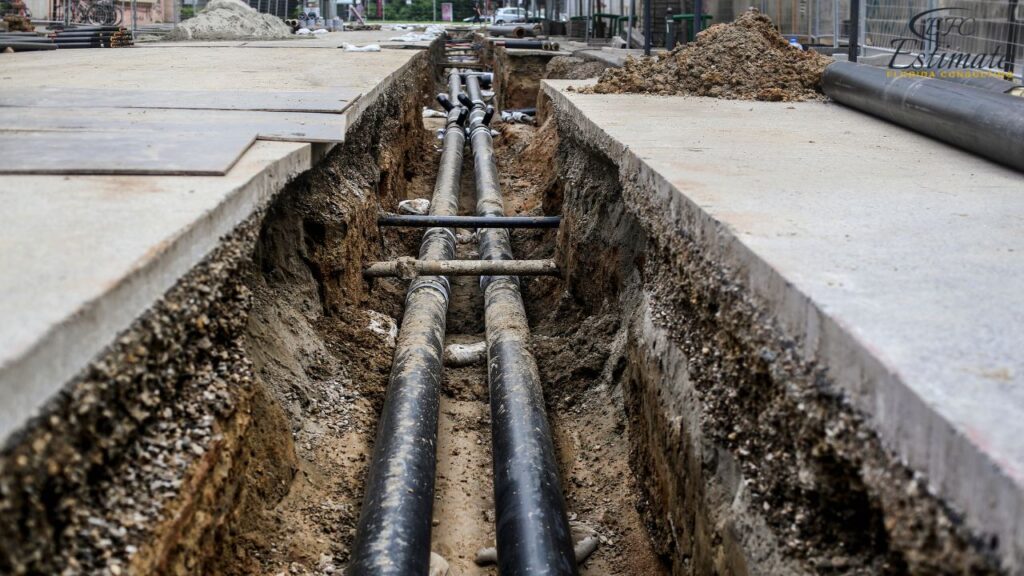
Piping Replacement Costs for Different Building Types
The cost of piping replacement can vary significantly depending on the type of building. Different buildings have unique plumbing needs, which affect the overall cost of replacing pipes. For example, residential buildings generally have simpler piping systems compared to industrial facilities, which may require more extensive piping networks and specialized materials. Here’s a breakdown of piping replacement costs by building type:
Building Type | Cost per Square Foot | Total Replacement Cost Range |
Residential Building | $10 – $20 | $20,000 – $40,000 (for 2,000 sq ft) |
Office Building | $15 – $25 | $75,000 – $125,000 (for 5,000 sq ft) |
Retail Store | $12 – $22 | $60,000 – $110,000 (for 5,000 sq ft) |
Industrial Facility | $20 – $30 | $200,000 – $300,000 (for 10,000 sq ft) |
Healthcare Facility | $25 – $35 | $250,000 – $350,000 (for 10,000 sq ft) |
Residential Building
Residential buildings generally have lower replacement costs per square foot compared to commercial structures due to less complex systems and smaller scale. The cost per square foot for replacing systems in a residential building ranges from $10 to $20. For a typical 2,000 square foot home, the total replacement cost would fall between $20,000 and $40,000. This range covers essential updates such as HVAC systems, plumbing, electrical wiring, and possibly insulation or roofing. These costs reflect the standard requirements for ensuring a safe, comfortable, and functional living environment.
Office Building
Office buildings require more robust and reliable systems to support daily business operations. The cost per square foot for replacing systems in an office building ranges from $15 to $25. For a 5,000 square foot office space, the total replacement cost would range from $75,000 to $125,000. This includes the replacement of HVAC systems, lighting, electrical wiring, and potentially IT infrastructure. These costs reflect the need for a well-functioning environment that supports productivity, energy efficiency, and comfort for employees.
Retail Store
Retail stores must maintain a welcoming and operational environment for customers, which can drive up the costs of replacing essential systems. The cost per square foot for a retail store ranges from $12 to $22. For a 5,000 square foot retail space, the total replacement cost is estimated between $60,000 and $110,000. These costs include updates to HVAC systems, lighting, plumbing (particularly if restrooms or specialty fixtures are involved), and possibly flooring or other interior elements that contribute to the customer experience. Ensuring these systems are up-to-date is crucial for maintaining a retail environment that is both comfortable and conducive to sales.
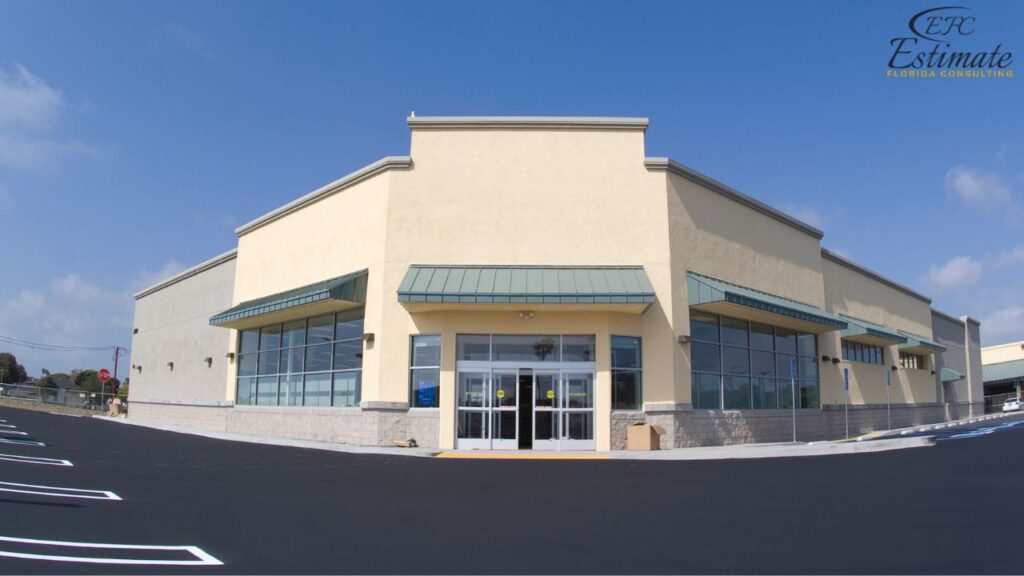
Industrial Facility
Industrial facilities are often larger and more complex, requiring heavy-duty systems to support manufacturing, storage, or other industrial activities. The cost per square foot for replacing systems in an industrial facility ranges from $20 to $30. For a 10,000 square foot space, the total replacement cost could range from $200,000 to $300,000. This includes the replacement of industrial-grade HVAC systems, plumbing, electrical wiring, and possibly specialized machinery or equipment. These costs reflect the need for systems that can withstand demanding conditions and support efficient industrial operations.
Healthcare Facility
Healthcare facilities have some of the most stringent requirements for system replacements due to the need for a sterile, reliable, and highly controlled environment. The cost per square foot for replacing systems in a healthcare facility ranges from $25 to $35. For a 10,000 square foot facility, the total replacement cost is estimated between $250,000 and $350,000. This includes the replacement of HVAC systems with high filtration capabilities, plumbing for medical-grade sanitation, electrical systems to support sensitive medical equipment, and possibly specialized systems like negative pressure rooms or cleanroom environments. These costs reflect the critical importance of maintaining a healthcare environment that meets strict regulatory standards and ensures patient safety.
Piping Replacement Material Options for Buildings
Choosing the right piping material is essential for both cost-effectiveness and long-term performance. Different materials offer varying levels of durability, flexibility, and cost, which can influence the total expense of the project. Selecting the appropriate material can also affect the building’s compliance with local codes and its overall sustainability. Here are some common piping materials and their associated costs:
Material Type | Cost per Linear Foot |
Copper | $10 – $15 |
PEX (Cross-linked Polyethylene) | $5 – $10 |
PVC (Polyvinyl Chloride) | $3 – $5 |
CPVC (Chlorinated Polyvinyl Chloride) | $6 – $8 |
Stainless Steel | $15 – $25 |
Copper
Copper is a traditional choice for plumbing due to its durability, reliability, and resistance to corrosion. The cost of copper piping ranges from $10 to $15 per linear foot, making it one of the more expensive options. Despite the higher cost, copper is favored for its long lifespan and the ability to handle both hot and cold water. It is also less prone to bacterial growth and can withstand high pressures, making it a preferred choice for many residential and commercial applications. The investment in copper piping often pays off in the long run due to its longevity and low maintenance requirements.
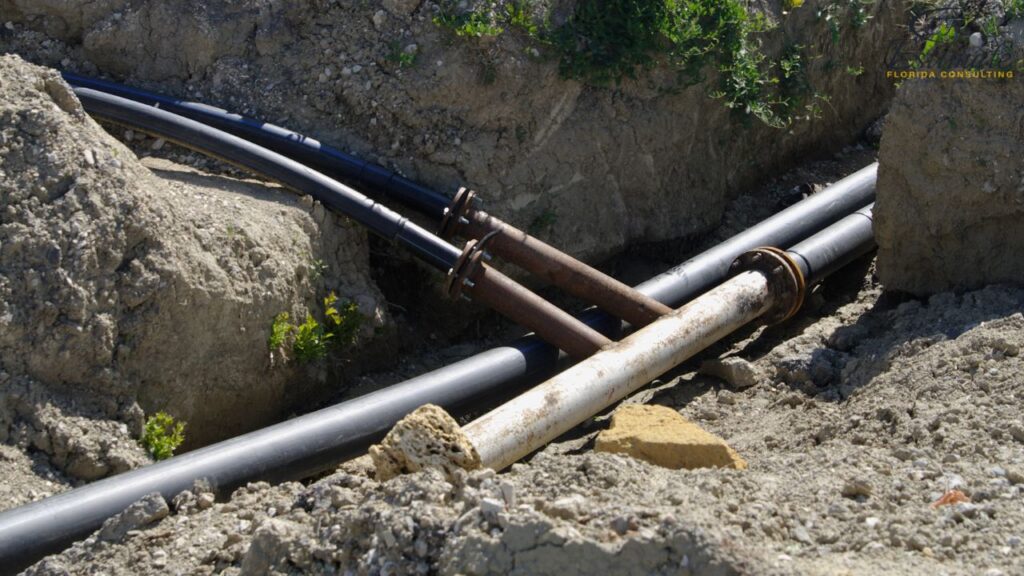
PEX (Cross-linked Polyethylene)
PEX is a flexible, affordable alternative to copper that has gained popularity in both residential and commercial plumbing. The cost of PEX piping ranges from $5 to $10 per linear foot, making it a cost-effective option for many projects. PEX is known for its ease of installation, as it can be bent around corners without the need for additional fittings, reducing labor costs. It is also highly resistant to scaling and corrosion, and its flexibility makes it less prone to bursting in freezing conditions. These characteristics make PEX an attractive option for those looking to balance cost with performance.
PVC (Polyvinyl Chloride)
PVC is one of the most economical options for plumbing, with costs ranging from $3 to $5 per linear foot. It is widely used for drain, waste, and vent (DWV) systems in residential and commercial buildings. PVC is lightweight, easy to work with, and resistant to corrosion, making it an excellent choice for non-pressurized applications. However, it is not suitable for hot water supply lines, as it can degrade under high temperatures. Despite its limitations, PVC remains a popular choice due to its affordability and ease of installation, particularly in systems where temperature extremes are not a concern.
CPVC (Chlorinated Polyvinyl Chloride)
CPVC is similar to PVC but is treated with chlorine, allowing it to withstand higher temperatures. This makes it suitable for hot and cold water distribution in both residential and commercial settings. The cost of CPVC piping ranges from $6 to $8 per linear foot, positioning it as a mid-range option between PVC and more expensive materials like copper. CPVC offers a balance of affordability, durability, and temperature resistance, making it a versatile choice for a variety of plumbing applications. It is particularly favored in systems where the higher temperature tolerance of CPVC is necessary.
Stainless Steel
Stainless steel is a premium material used in plumbing, known for its strength, corrosion resistance, and aesthetic appeal. The cost of stainless steel piping ranges from $15 to $25 per linear foot, making it the most expensive option on this list. Stainless steel is often used in environments where corrosion resistance is paramount, such as in coastal areas or industrial settings. It is also chosen for its clean appearance and ability to withstand high pressures and temperatures. While the initial cost is high, stainless steel offers unparalleled durability and can be a worthwhile investment for critical applications where performance and longevity are key considerations.
Factors Influencing the Cost of Piping Replacement
Several factors can influence the overall cost of piping replacement. These factors are critical to consider when planning your project, as they can significantly impact both the budget and the timeline:
Building Size and Layout
Larger buildings or those with complex layouts will generally incur higher costs due to the increased length of piping required and the complexity of the installation process. Multi-story buildings, in particular, may require additional labor and materials, driving up costs.
Material Choice
The type of material chosen for the piping system can significantly impact costs. While copper is durable and long-lasting, it is more expensive than alternatives like PEX or PVC. The material choice should be based on factors such as durability, local building codes, and the specific needs of the building.
Plumbing Guide
Duct Design & Installation
PEX Pipe Installation
Swimming Pool Plumbing
Accessibility
The ease with which existing pipes can be accessed and replaced will affect labor costs. In older buildings where pipes are hidden behind walls or under floors, additional work may be required to access and replace the pipes, increasing the overall cost.
Local Labor Costs
Labor costs can vary depending on your location. In areas with higher labor rates, the cost of piping replacement will be higher. Additionally, the availability of skilled labor can influence both the cost and the timeline of the project.
Permits and Inspections
Replacing piping often requires permits and inspections to ensure compliance with local building codes. The cost of these permits and inspections should be factored into the overall budget, as they can add to the total expense.
Average Costs for Piping Replacement by Material
The cost of piping replacement can vary widely depending on the material used. Below is a breakdown of average costs by material type. Understanding these costs can help in selecting the most appropriate material for your building’s needs while staying within budget:
Material Type | Cost per Linear Foot |
Copper | $10 – $15 |
PEX (Cross-linked Polyethylene) | $5 – $10 |
PVC (Polyvinyl Chloride) | $3 – $5 |
CPVC (Chlorinated Polyvinyl Chloride) | $6 – $8 |
Stainless Steel | $15 – $25 |
Cost Breakdown by Type of Facility
Different types of facilities have unique piping needs, which can impact the overall cost of replacement. Here’s a detailed breakdown of piping replacement costs by facility type, which can help in budgeting for specific projects:
Facility Type | HVAC Cost | Plumbing Cost | Electrical Cost | Total Cost |
Office Building | $40,000 – $60,000 | $30,000 – $50,000 | $20,000 – $30,000 | $90,000 – $140,000 |
Retail Store | $45,000 – $65,000 | $35,000 – $55,000 | $25,000 – $35,000 | $105,000 – $155,000 |
Industrial Facility | $100,000 – $160,000 | $80,000 – $130,000 | $50,000 – $80,000 | $230,000 – $370,000 |
Hotel | $220,000 – $340,000 | $180,000 – $270,000 | $150,000 – $230,000 | $550,000 – $840,000 |
Healthcare Facility | $120,000 – $180,000 | $100,000 – $150,000 | $80,000 – $120,000 | $300,000 – $450,000 |
This table provides an overview of how costs can vary depending on the type of facility and its specific plumbing requirements.
Detailed Cost Breakdown for Piping Replacement
Understanding the detailed cost breakdown of piping replacement can help in planning and budgeting for the project. Here’s a detailed breakdown:
Cost Component | Low-End Cost | High-End Cost |
Pipe Material | $3 – $25 per linear foot | $6 – $30 per linear foot |
Labor Costs | $5 – $15 per square foot | $10 – $20 per square foot |
Accessibility Adjustments | $2 – $5 per square foot | $4 – $8 per square foot |
Permits and Inspections | $500 – $1,500 | $1,000 – $3,000 |
Disposal and Cleanup | $1 – $3 per square foot | $2 – $5 per square foot |
Pipe Material
The cost of pipe materials can vary widely depending on the type of material chosen. On the low end, materials like PVC may cost between $3 and $25 per linear foot, offering an affordable option for non-pressurized systems. On the high end, premium materials like stainless steel can range from $6 to $30 per linear foot, providing superior durability and resistance to corrosion. The choice of material will depend on factors such as the specific requirements of the plumbing system, the environment, and budget constraints.

Labor Costs
Labor costs represent a significant portion of the total expense in plumbing projects. These costs can range from $5 to $15 per square foot on the low end, with prices increasing to $10 to $20 per square foot for more complex or labor-intensive jobs. Factors influencing labor costs include the scope of the project, the complexity of the installation, and the experience level of the plumbers. Projects that involve extensive retrofitting, complex piping layouts, or work in difficult-to-access areas will typically fall on the higher end of the labor cost spectrum.
Accessibility Adjustments
Accessibility adjustments are necessary when the plumbing system is located in hard-to-reach areas, such as behind walls, under floors, or in confined spaces. These adjustments can add $2 to $5 per square foot on the low end, and $4 to $8 per square foot on the high end. Costs vary based on the difficulty of accessing the plumbing and the extent of modifications required to reach and work on the system. Projects that require significant demolition or reconstruction to access plumbing lines will incur higher costs, making it important to account for these potential expenses during the planning phase.
Permits and Inspections
Obtaining the necessary permits and passing inspections are critical steps in any plumbing project. These costs can range from $500 to $1,500 on the low end, with high-end costs reaching $1,000 to $3,000. The cost of permits and inspections depends on the local regulations, the size of the project, and the specific requirements set by the municipality. Failing to obtain the correct permits or pass inspections can result in costly delays, fines, or the need for rework, making it essential to include these costs in the project budget.
Disposal and Cleanup
Disposal and cleanup costs are often overlooked but are crucial components of the total project cost. These costs typically range from $1 to $3 per square foot on the low end, with more extensive cleanup and disposal requirements pushing costs to $2 to $5 per square foot. This cost covers the removal of old piping, debris, and any waste generated during the installation process. Proper disposal is especially important for materials that require special handling, such as asbestos or lead pipes. Additionally, thorough cleanup ensures that the site is safe and ready for use once the project is completed.
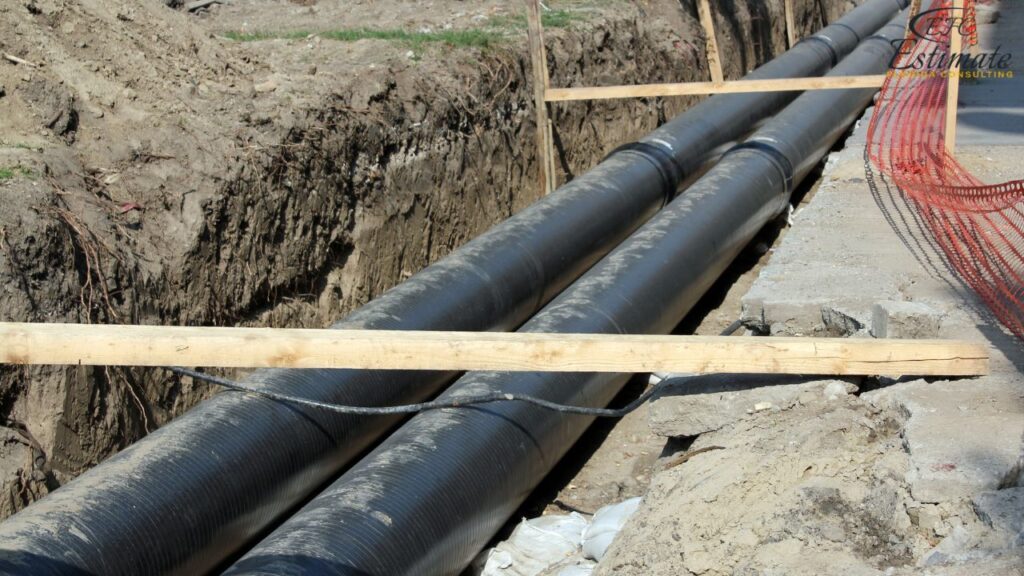
Additional Considerations for Piping Replacement Projects
When planning a piping replacement project, there are several additional considerations that can influence the overall cost and success of the project:
Building Age and Condition
Older buildings may have outdated plumbing systems that require more extensive work to replace. This can include removing old pipes, upgrading connections, and ensuring compatibility with modern materials, all of which can add to the cost.
Environmental Impact
Consider the environmental impact of the materials used. Some piping materials are more eco-friendly than others, and choosing sustainable options may offer benefits such as reduced energy use and lower disposal costs. Additionally, certain materials may be eligible for green building certifications or incentives.
Downtime and Business Disruption:
Replacing pipes can be disruptive to daily operations, particularly in commercial buildings. Planning the project during off-peak times or coordinating with tenants can help minimize disruption, but it may also extend the project timeline and increase costs.
Long-Term Maintenance
Investing in high-quality piping materials can reduce the need for future maintenance and repairs, providing long-term cost savings. Additionally, regular maintenance and inspections can help identify potential issues before they become major problems, further extending the lifespan of the piping system.
Compliance with Local Codes and Regulations
Ensuring that the piping replacement project complies with local building codes is essential. Non-compliance can result in fines, delays, and additional costs, so it’s important to work with a contractor who is familiar with the regulations in your area.
What is the Cost of Piping?
The cost of piping in a commercial building can vary widely depending on the size of the building, the materials used, and the complexity of the project. On average, you can expect to pay between $10 to $30 per square foot for piping replacement, with the total cost ranging from $20,000 to $300,000 or more depending on the specific needs of the building. Understanding these costs can help you plan and budget more effectively, ensuring that the project is completed on time and within budget.
Download Template For Commercial Painting Project Breakdown
- Materials list updated to the zip code
- Fast delivery
- Data base of general contractors and sub-contractors
- Local estimators
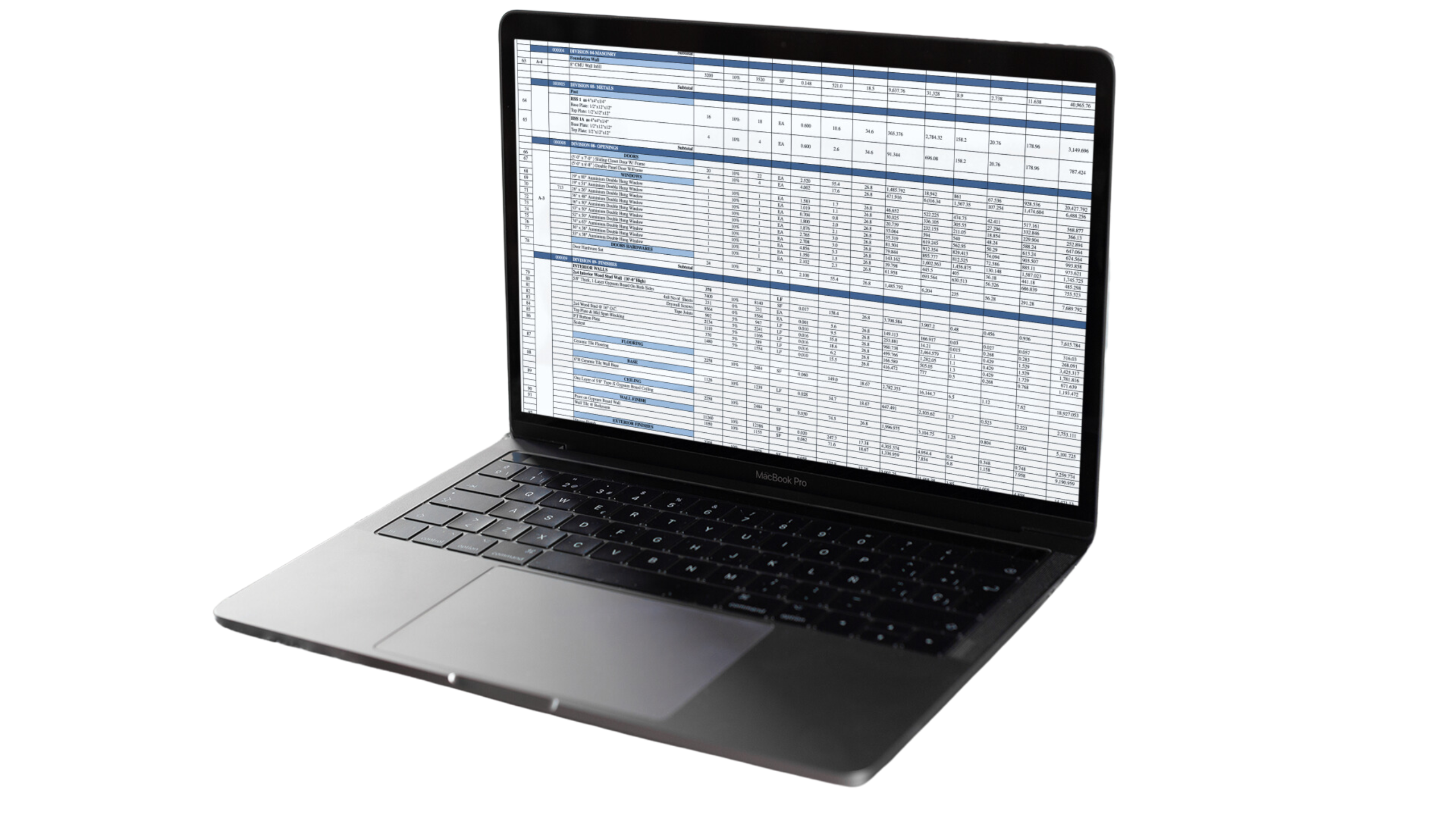
How to Choose the Right Contractor for Piping Replacement
Selecting the right contractor is crucial for the success of your piping replacement project. Here are some key factors to consider when choosing a contractor:
- Verify Credentials and Experience: Ensure the contractor is licensed, insured, and has experience with piping replacement projects similar to yours. A contractor with a proven track record in the industry is more likely to deliver quality results and handle the complexities of the project efficiently.
- Check References and Reviews: Ask for references from previous clients and check online reviews to get an idea of the contractor’s reputation. Positive feedback from past clients is a good indicator of the contractor’s reliability and workmanship. Additionally, visiting completed projects or speaking directly with former clients can provide valuable insights.
- Obtain Detailed Quotes: Request quotes from multiple contractors to compare pricing, services, and timelines. Ensure that the quotes are detailed and include all aspects of the project, from materials and labor to permits and inspections. This will help you make an informed decision and avoid any hidden costs or surprises down the line.
- Understand the Contract: Review the contract carefully before signing, making sure it outlines all project details, including the scope of work, payment schedules, and warranty information. A clear and detailed contract helps prevent misunderstandings and protects both parties in the event of any disputes or changes during the project.
- Choose a Contractor Familiar with Local Regulations: It’s important to work with a contractor who understands the local building codes and regulations. This ensures that your project complies with all legal requirements, reducing the risk of fines, delays, or additional costs due to non-compliance.
Conclusion
When planning a piping replacement project, understanding the costs involved is essential for effective budgeting and decision-making. Piping replacement costs can vary widely depending on factors such as the type of building, materials used, and project complexity. Typically, these costs range from $10 to $30 per square foot, with total expenses ranging from $20,000 to $300,000 or more. Each building type, from residential to healthcare facilities, has unique requirements that impact the overall cost. Additionally, factors like labor, accessibility, permits, and cleanup further influence the budget. Selecting the right contractor is crucial to ensure the project is completed on time, within budget, and in compliance with local regulations.
FAQs
The cost of piping replacement generally ranges from $10 to $30 per square foot. This cost can vary based on factors like the type of building, the materials used, and the complexity of the installation. Understanding the cost per square foot helps establish a baseline for budgeting, but the total project cost will depend on the specific requirements of your building.
Piping replacement costs differ based on the type of building. For example, residential buildings typically have simpler piping systems and lower costs, ranging from $10 to $20 per square foot, with a total replacement cost of $20,000 to $40,000 for a 2,000 sq ft home. In contrast, industrial facilities, which require more extensive piping networks, have costs ranging from $20 to $30 per square foot, with a total cost between $200,000 and $300,000 for a 10,000 sq ft space.
Common piping materials include:
- Copper: $10 – $15 per linear foot
- PEX (Cross-linked Polyethylene): $5 – $10 per linear foot
- PVC (Polyvinyl Chloride): $3 – $5 per linear foot
- CPVC (Chlorinated Polyvinyl Chloride): $6 – $8 per linear foot
- Stainless Steel: $15 – $25 per linear foot
Each material offers different levels of durability, flexibility, and cost, affecting the overall project expense.
Several factors can impact the cost of piping replacement, including:
- Building Size and Layout: Larger or more complex buildings require more piping and labor, increasing costs.
- Material Choice: More durable materials like copper and stainless steel are more expensive than alternatives like PVC.
- Accessibility: Difficulty in accessing pipes (e.g., behind walls or under floors) can increase labor costs.
- Local Labor Costs: Labor rates vary by location, affecting the total cost of the project.
- Permits and Inspections: Compliance with local codes often requires permits and inspections, adding to the project cost.
Costs vary depending on the facility type:
- Office Building: $90,000 – $140,000
- Retail Store: $105,000 – $155,000
- Industrial Facility: $230,000 – $370,000
- Hotel: $550,000 – $840,000
- Healthcare Facility: $300,000 – $450,000
Costs vary depending on the facility type:
- Office Building: $90,000 – $140,000
- Retail Store: $105,000 – $155,000
- Industrial Facility: $230,000 – $370,000
- Hotel: $550,000 – $840,000
- Healthcare Facility: $300,000 – $450,000
These estimates include HVAC, plumbing, and electrical systems, reflecting the unique needs of each facility.
Selecting the right contractor is crucial for a successful project. Consider the following:
- Verify Credentials and Experience: Ensure the contractor is licensed, insured, and experienced in similar projects.
- Check References and Reviews: Look for positive feedback from previous clients to gauge reliability and workmanship.
- Obtain Detailed Quotes: Compare quotes from multiple contractors, ensuring they include all aspects of the project.
- Understand the Contract: Review the contract thoroughly to ensure it covers the scope of work, payment schedules, and warranties.
- Choose a Contractor Familiar with Local Regulations: A contractor who understands local codes will ensure compliance, reducing the risk of fines or delays.
Google Reviews

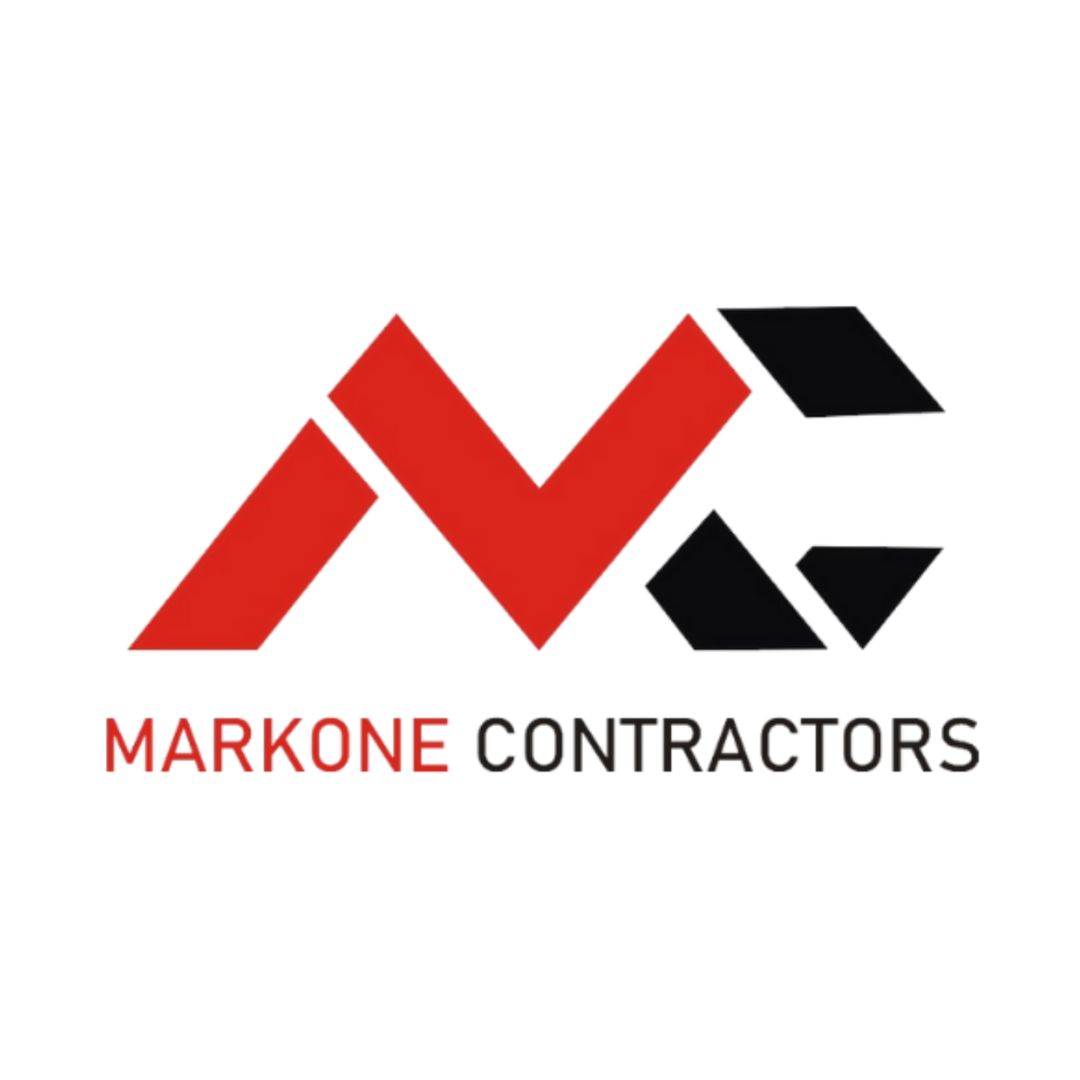

Process To Get The Piping Cost Estimate Report
Here I am going to share some steps to get the piping cost estimate report.
-
You need to send your plan to us.
You can send us your plan on info@estimatorflorida.com
-
You receive a quote for your project.
Before starting your project, we send you a quote for your service. That quote will have detailed information about your project. Here you will get information about the size, difficulty, complexity and bid date when determining pricing.
-
Get Estimate Report
Our team will takeoff and estimate your project. When we deliver you’ll receive a PDF and an Excel file of your estimate. We can also offer construction lead generation services for the jobs you’d like to pursue further.

